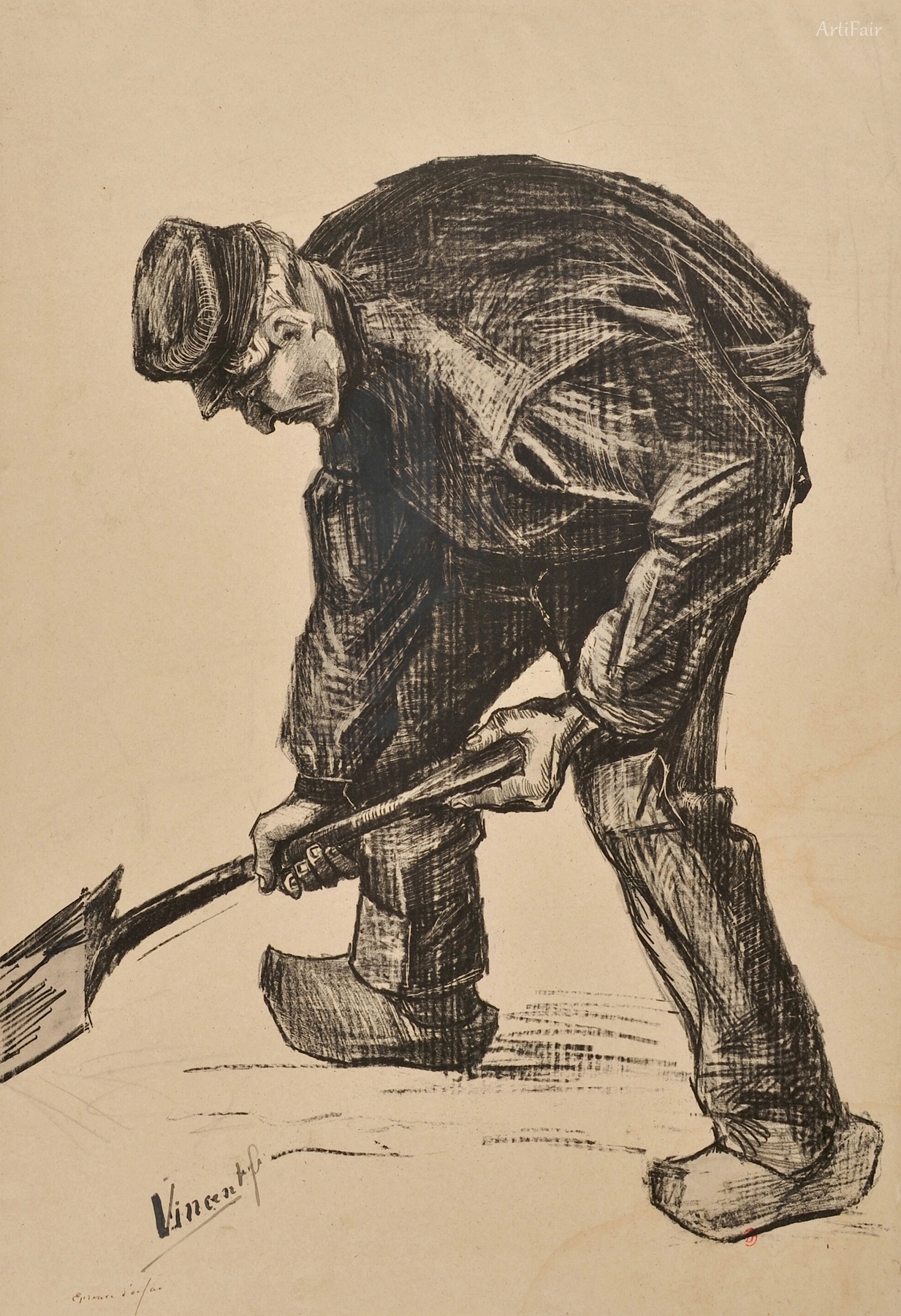
Art Appreciation
In this striking piece, a solitary figure captures the essence of toil and labor. The man, bent forward with intense concentration, is wielding a shovel, deeply engaged in his task. The lines of the drawing, so bold and dynamic, yet somewhat rough, evoke a visceral feeling of effort and determination. His posture, knit tightly with purpose, reveals not only his commitment to the work but also a hint of vulnerability – a glimpse of deeper emotions that are often masked by the weight of labor. The muted, monochromatic palette, primarily consisting of deep blacks and soft grays, enhances the raw, earthy quality of the scene, while also imbuing it with an emotional weight; it feels as though you could almost hear the scrape of the shovel against the ground or feel the strain in the man’s muscles.
As we delve into the context of this drawing, it is important to remember that this artwork was created during a time when Vincent van Gogh was exploring the life of the working class. His attention to detail, notably in the contours of the subject's clothing and facial features, illustrates a respect for the dignity of laborers, which was often overlooked in the art of his time. This piece stands as a remarkable reflection of the artist's evolving style and thematic interests; the raw emotional energy captured here speaks to Van Gogh's profound engagement with the human condition, highlighting not only the physicality of labor but also hinting at the myriad emotions tied to the toil of daily life. It invites viewers to pause and reflect on both the beauty and struggle inherent in work.